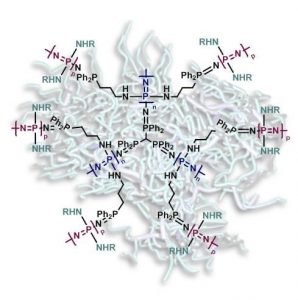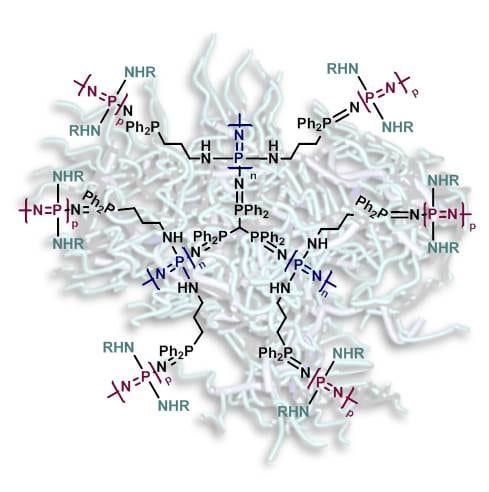For new realms of materials science to be explored it is important to extend the chemical toolkit offered by modern organic polymer chemistry to areas which step away from classical carbon-based systems. Along with varying the chemical composition, tailoring of macromolecular architecture gives us unprecedented options to fine-tune physicochemical characteristics of materials.

Star dendritic molecular brushes from polyphosphazenes
In a new study, Henke et al., researchers from the Johannes Kepler University in Linz, Austria, present for the first time a synthetic route to prepare polyphosphazenes with globular, highly branched morphologies (so called “star dendritic molecular brushes”) and controlled size.
Compared to aliphatic all-carbon polymers, polyphosphazenes consist of a phosphorus-nitrogen backbone and offer a number of distinctive properties including high chain flexibility, multifunctionality and tailorable (bio)degradation rates. However structural synthesis remains challenging, restricting access to well-defined macromolecular architectures.
The phosphazene structure provides the reported macromolecules with a very large number of branching units and in two simple steps it is possible to prepare systems with up-to 30000 end groups, which is exceptional for any class of polymer. Additionally, the high reactivity of the polyphosphazene backbone facilitates chemical post-modification. As a result, the polymers can act as scaffolds for the preparation of materials with a wide range of chemical and biological characteristics or to introduce different functional moieties, for example for ultra-high catalyst or drug loading.
In this initial report, which appeared recently in Macromolecular Rapid Communications, the precursor-polymers were substituted with Jeffamine oligomers to give a series of large, globular water soluble polymers with hydrodynamic diameters between 10-70 nm. Such materials could be particularly interesting candidates in drug delivery applications, where highly branched, globular soluble structures based on biocompatible and degradable polymers could be extremely valuable.

















